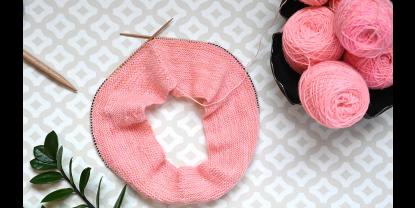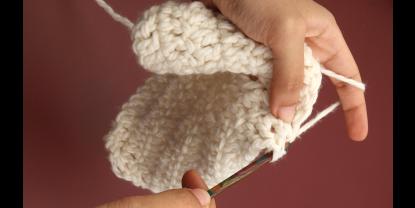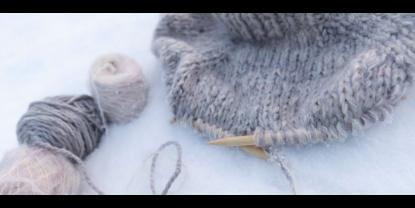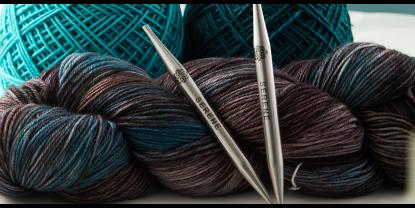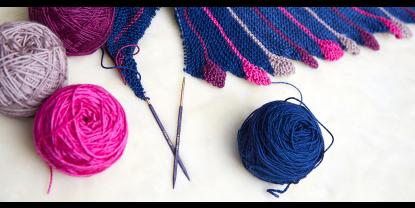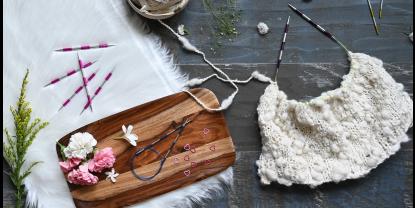Have you used a repair hook in your knitting project? Or, you have not discovered the superpowers? In this blog, we’ll explore everything you need to know about the repair hook. They're the knitting equivalent of that friend who makes thing alright, fixing mistakes, offering support in difficult times and never lets you down. In the knitting world, if knitting needles are superstars, repair hooks are the reliable best friend who always has your back when things don’t work out as you imagined.
What is a Repair Hook?

A repair hook is a specialized tool designed specifically for rescuing dropped stitches and fixing knitting mishaps. Shaped like a regular crochet hook but usually smaller in length, the tool consists of a hook at one end and a pointy tip at the other. This ingenious design allows you to grab dropped stitches and work them back up through the rows below without losing them in the process. The knitting accessory is a utility tool that can solve problems whether you are just starting out or knitting for years.
Why do you need a repair hook?
Picture this; you’ve knit around 100 rows of your dream project (a gorgeous sweater or an intricate lace shawl), when suddenly you spot a dropped stitch. A glaring mistake ready to unravel or push you off the edge. Your heart sinks, but wait! You’ve got your best friend - repair hook! There’s no need to consider unraveling all the weeks of work or dramatically throwing your project.
Like the name suggests, the repair hook repairs. From accidental dropped stitches to untwisting twisted cables, to correcting mistakes even after the project is finished, blocked and already worn.
The Many Uses of Your Repair Hook
While the repair hook's claim to fame is rescuing dropped stitches, this versatile tool has several other applications.
1. Dropped Stitch Recovery
Whenever a stitch drops and starts to ladder down through multiple rows, your repair hook can methodically work it back up, row by row, reconstructing your fabric exactly as it should be. Refer to our previous blog on how to fix a dropped stitch.
This recovery process is not just while you are in the middle of the project this is also handy even after the project is off the knitting needles.
2. Fixing Cable Mistakes
Crossed your cables the wrong way several rows back? A repair hook can help you drop down just the affected stitches and rework the cable crossing correctly without having to frog your entire project.
3. Correcting Color Work Errors
Spotted a mistake in your Fair Isle pattern? You can use a repair hook to drop specific stitches and reknit them with the correct colors, saving you from ripping back extensive colorwork.
4. Tink Prevention
When you need to unknit stitch by stitch (tinking), a repair hook can help secure stitches that might otherwise drop, giving you confidence as you work backward through your knitting. You can explore our previous guide on tinking: the process of unknitting.
5. Weaving in Ends
The hook can be helpful for weaving yarn ends through your finished fabric, especially in tight spots where a regular wool needle may not work smoothly.
How to Use Your Repair Hook Like a Pro
Using a repair hook might seem intimidating at first, but it's surprisingly straightforward once you understand the technique.
- Start by identifying your dropped stitch and the horizontal strands (ladder rungs) above it.
- Insert your repair hook through the dropped stitch from front to back, ensuring the latch is open.
- Hook the first horizontal strand with your repair hook, then pull it through the stitch loop.
- Continue this process, working your way up row by row until you reach your needles, then transfer the rescued stitch back onto your needle.
Quality matters when it comes to repair hooks, and KnitPro offers excellent options designed for different yarn weights and knitting projects. Their repair hooks ensuring your stitches stay secure throughout the repair process.
Available in various sizes to match different yarn weights, these tools are built to last and perform when you need them most.
The repair hook is an absolute necessity for all knitters, beginners or advanced knitters. You'll find yourself knitting with more confidence, knowing that even if mistakes happen, you have the knowledge and tools to fix them. So embrace the repair hook, and never let mistakes derail your knitting dreams again.





